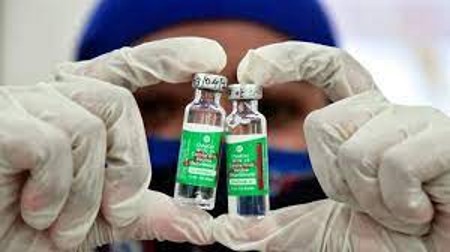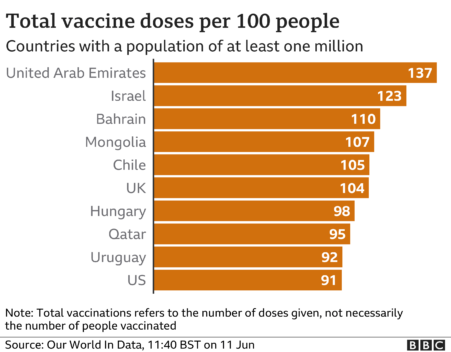As of the writing of this posting the world has seen 176 million infected by COVID-19 in all its variants, with 3.81 million deaths. That’s 2.1% in reported case deaths and probably an underrepresentation of actual totals.
The World Health Organization (WHO) acknowledges that the death totals are underreported because many countries have inaccurate counts. Just how far off? When recorded COVID-19 deaths had reached over 1.8 million in 2020, the WHO estimated actual mortality was at least 3 million. So actual deaths were more than 65% greater than what was being reported. When translated to current figures, that would mean more than 6.3 million have died from COVID-19 or 3.58% of reported cases (although reported cases may be underrepresented as significantly).
When compared to the Spanish Flu that followed World War One, COVID-19 deaths represent less than 13% of the total estimate to have occurred during that former pandemic.
For further comparisons to other pandemics of the past, the Black Death in the 14th century caused mortality rates of between 30 and 60% in European countries where it landed (which was most of them). That makes COVID-19 seem like far less a threat.
Why COVID Has Killed Relatively Few of Us
From the first reports out of China, the science of genomics has helped us tremendously in understanding what we were up against. Researchers quickly mapped the virus’s genome. They combined genetic understanding with advances in vaccine research to produce quick solutions to fight the virus.
Technologies unheard of in much of the 20th century, adenovirus and mRNA delivery in represent novel breakthroughs in vaccine technology. Research and testing was fast-tracked with clinical studies, trials, and reports done in months rather than years. A considerable amount of money got thrown at the problem to collapse timelines and produce vaccine products quickly. The American program was named Project Warp Speed referring to the Warp Drives that powered Star Trek’s starships.
The result has been a proliferation of vaccines available in record time with the only thing holding the planet from delivering a global solution, roadblocks in supply, manufacturing, and distribution.
Along with rapid vaccine development came trial and error from the global medical community in the treating of infected patients. In the beginning, many died. But now hospitals have developed a set of protocols that produce much lower mortality and better long-term patient outcomes.
Addressing Global Manufacturing and Distribution
Vaccination programs are only as strong as their weakest links. It is the weakest links, however, that have yet to be adequately addressed.
Where coverage is strong is in countries like Canada where this week vaccination rates have surpassed 61% of the total population on first doses and 8% and rapidly growing full vaccination.
In the U.S., first dose vaccine recipients have surpassed 52% with 42% receiving a second dose. The U.S. rate has slowed down as anti-vaxxers resist being part of the global health solution.
In the European Union (EU), as of the end of May, 36.4% have received their first dose, and 16.4% are fully vaccinated.
In the United Kingdom, 78% of the population has received a first dose, and 45% are fully vaccinated.
China is vaccinating at a rate of 20 million doses per day. No other country comes even close to that vaccination rate.
In the chart below, other nations have shown how effective they have been in getting their populations vaccinated. These are countries with populations of a million or more with vaccination dose rates per 100 people. In the lead is the United Arab Emirates with Israel second. Not included here are countries under one million, like Bhutan who successfully provided single-dose vaccines to over 63% of its population, all done in one week.
How many doses of COVID-19 vaccines have been administered to date globally? The number as of today stands at 2.2 billion, or 28.9 per 100 people. That means over 71% on this planet still need at least first-dose protection from the virus.
How to provide that coverage remains an ongoing challenge. In the world of rich nations, for example, Canada has bought more than 280 million vaccine doses from suppliers for a country of 38 million, which represents 370% more of the two doses the entire population needs. And the U.S. has placed orders for more than 1.2 billion doses, representing 180% more than the 330 million Americans will need to be fully vaccinated.
This week during a meeting of the G7, the issue of vaccine distribution to nations in need was on the front burner in discussions. The WHO, which has set up COVAX, a program whereby rich countries can redistribute vaccines where needed has been pointing out the need to take these surplus purchases and get them into as many arms around the planet as possible.
With 7.8 billion on the planet and a G7 that represents a mere 11% of the total, the pledge by its leaders to supply one billion doses (which if double doses are required means an additional 500 million immunized) in 2021 and 2022 falls well short of ending COVID-19 as a global health threat.
Who else can come to the rescue? China is not part of the G7 and has supplied 300 million homegrown vaccines and pledged $3 billion USD to countries seeking help. Russia, also not part of the G7, and with challenges of its own in getting Russians to take the vaccine (12.8% of the population have had one dose with 9.9% fully vaccinated), has offered 1.2 billion doses of its homegrown Sputnik V vaccine to countries looking for help. Even Cuba, with its own homegrown vaccines, is offering them to countries like Venezuela and Iran.
Taking all of the above pledges into consideration, the effort to vaccinate everyone within the next two years will fall well short and that means pandemic hot spots will remain with us flaring up from time to time. We have to get to more than 5 billion. That calls for more effort on the part of those who have the means to help.
In Part 2 of this topic, we’ll look at the variant threat that will only be exacerbated by our tardiness in not getting everyone vaccinated as soon as possible.










